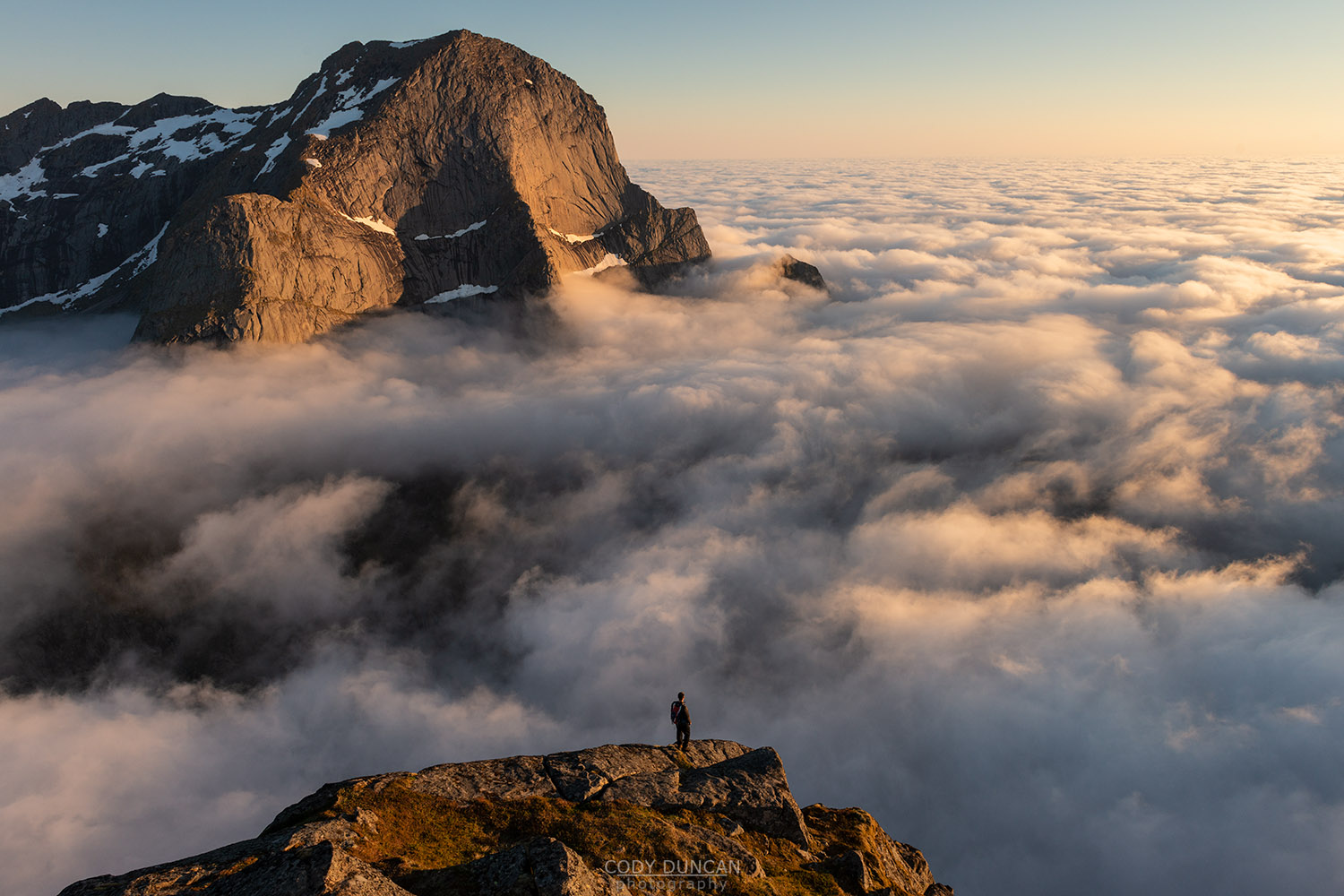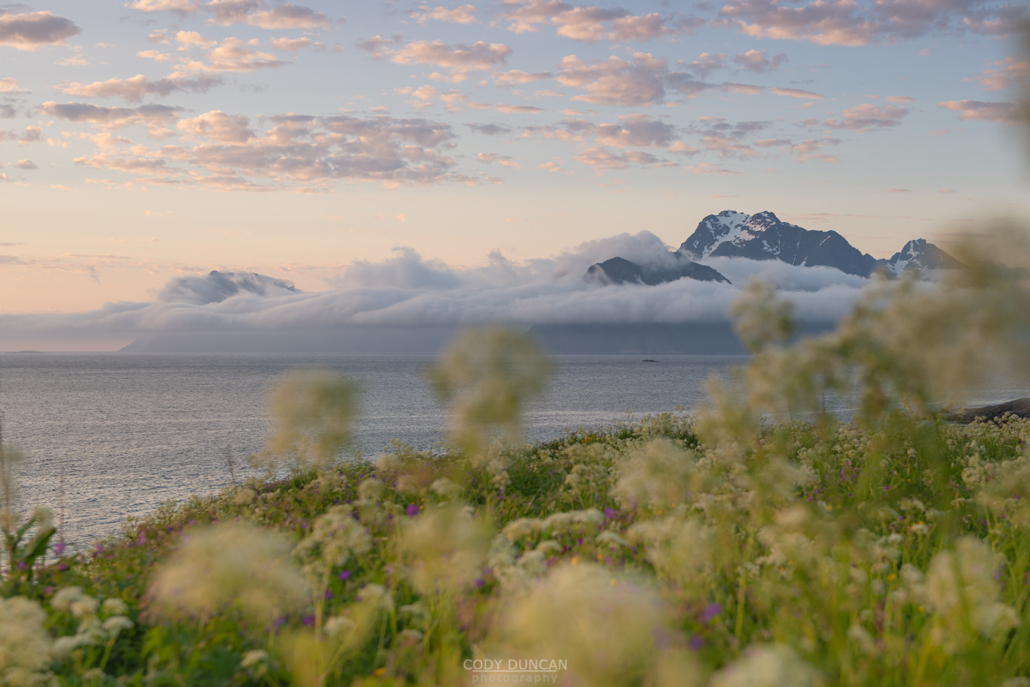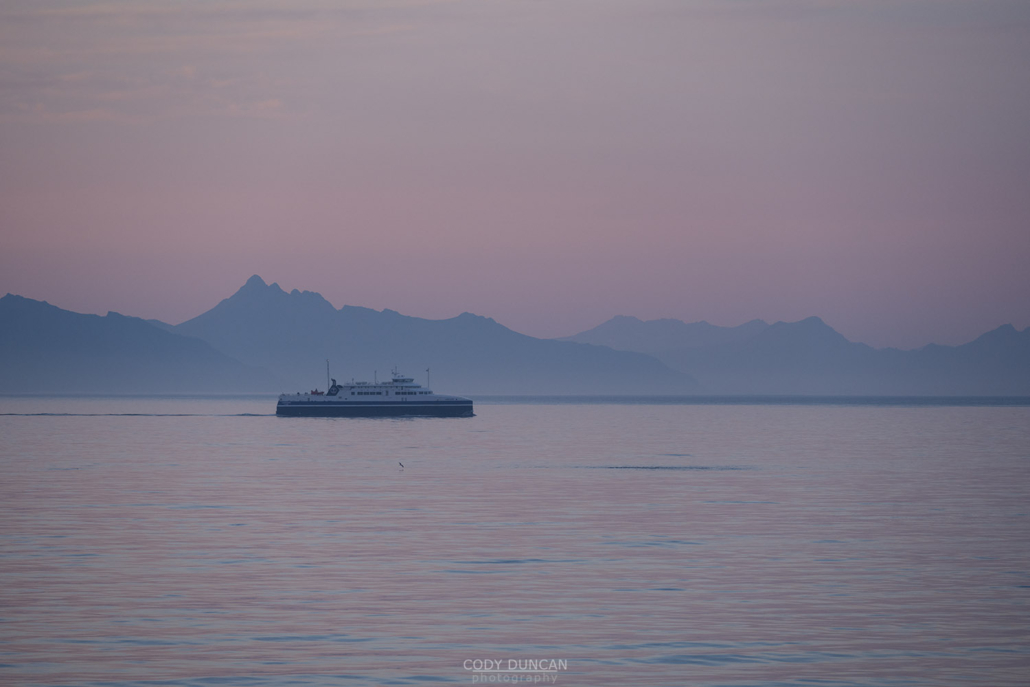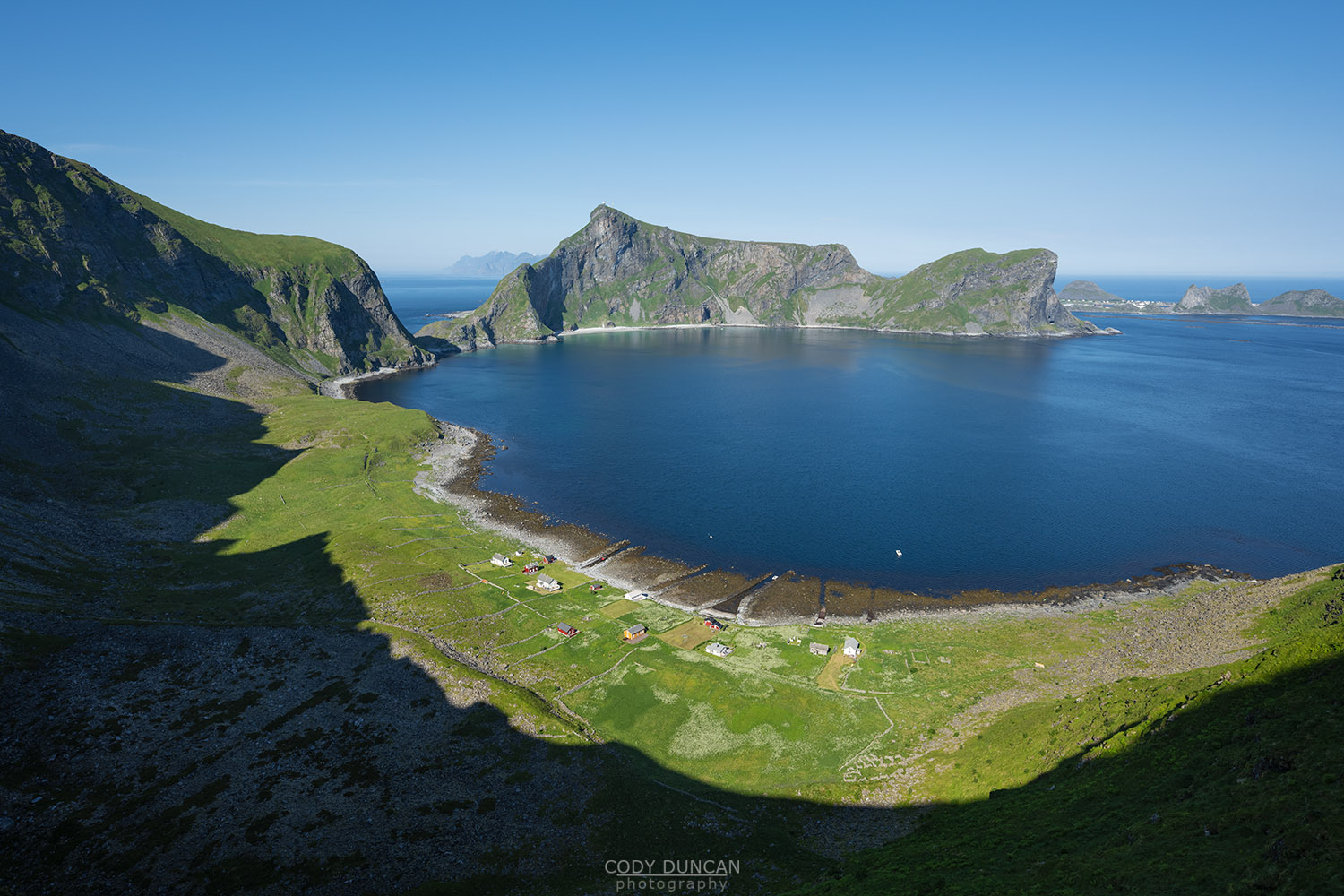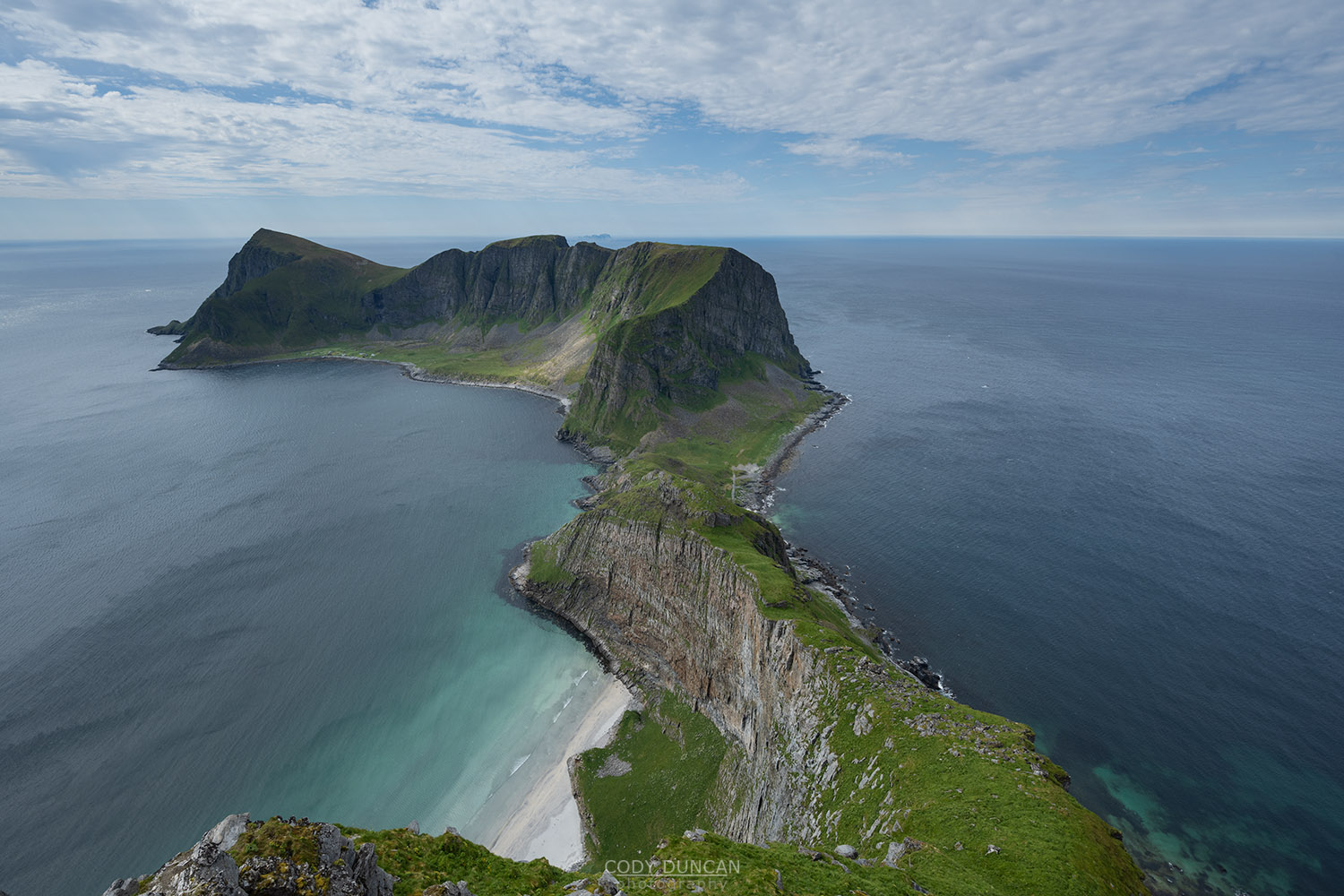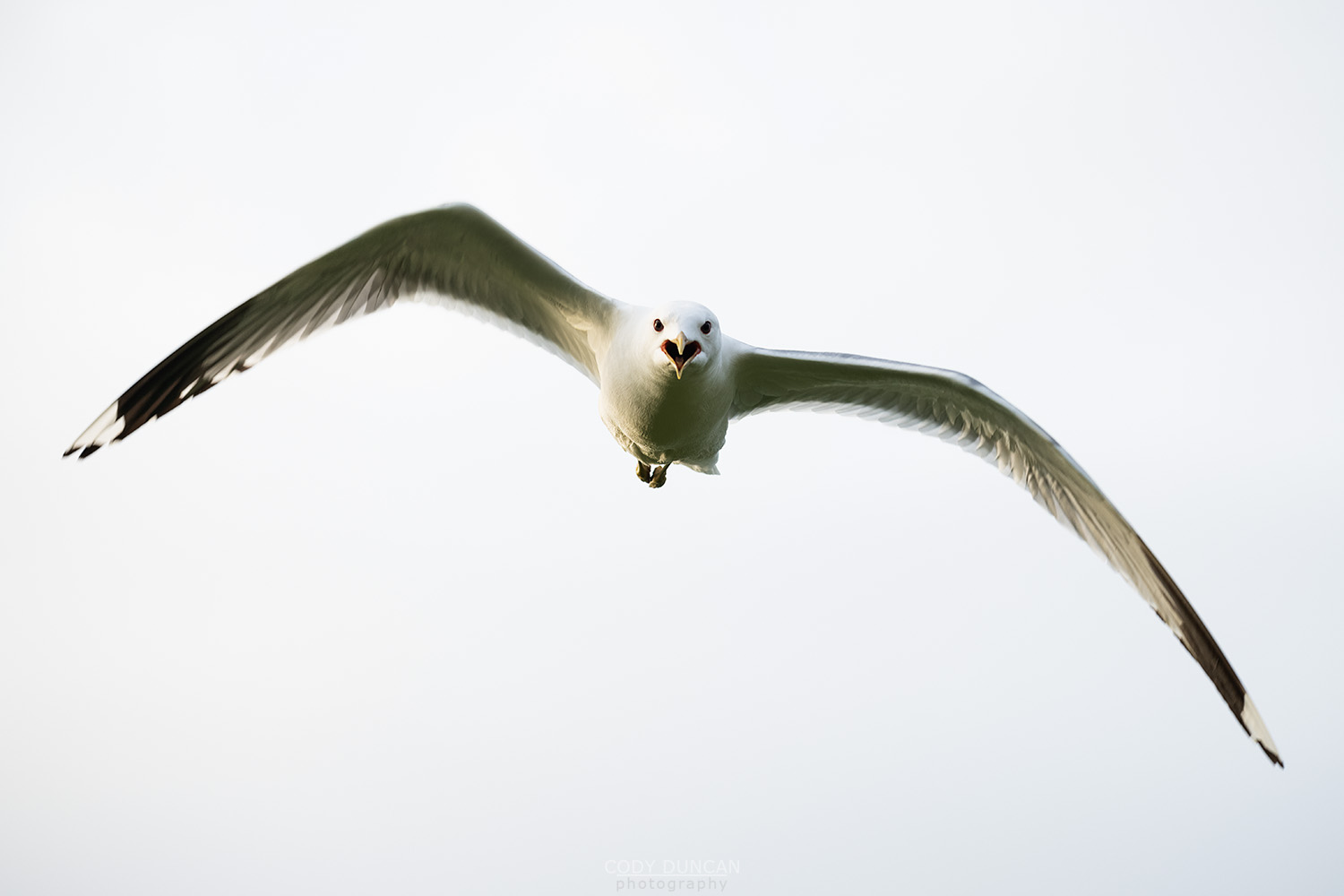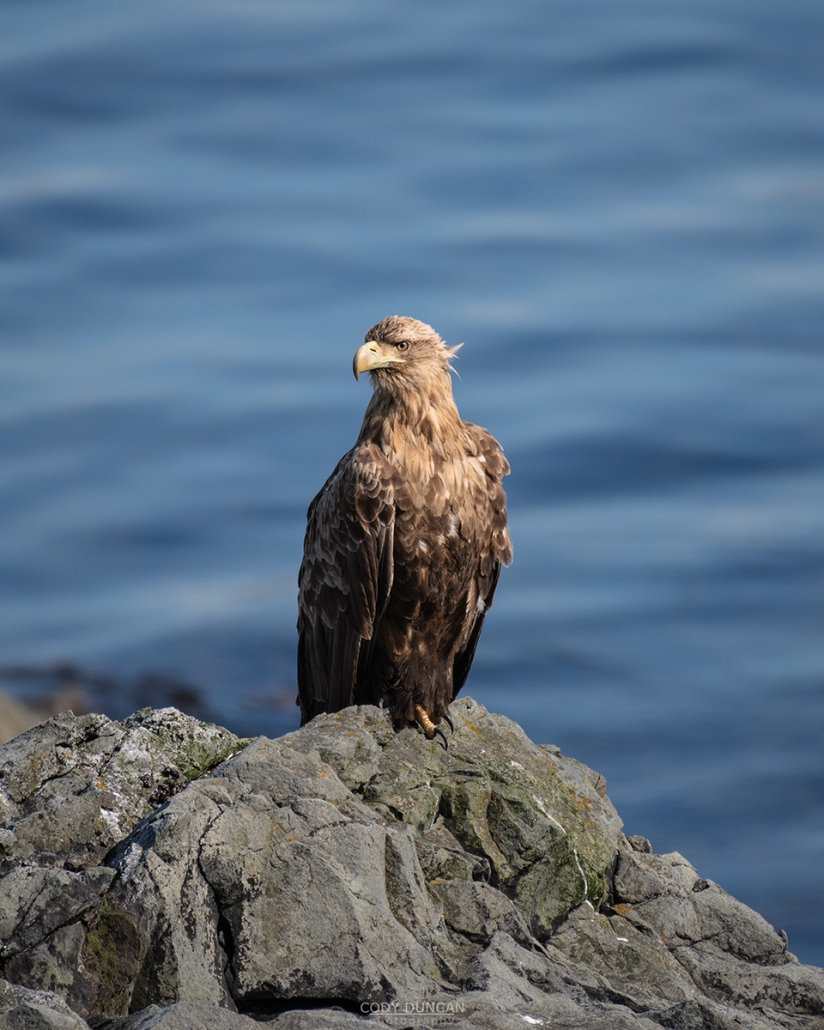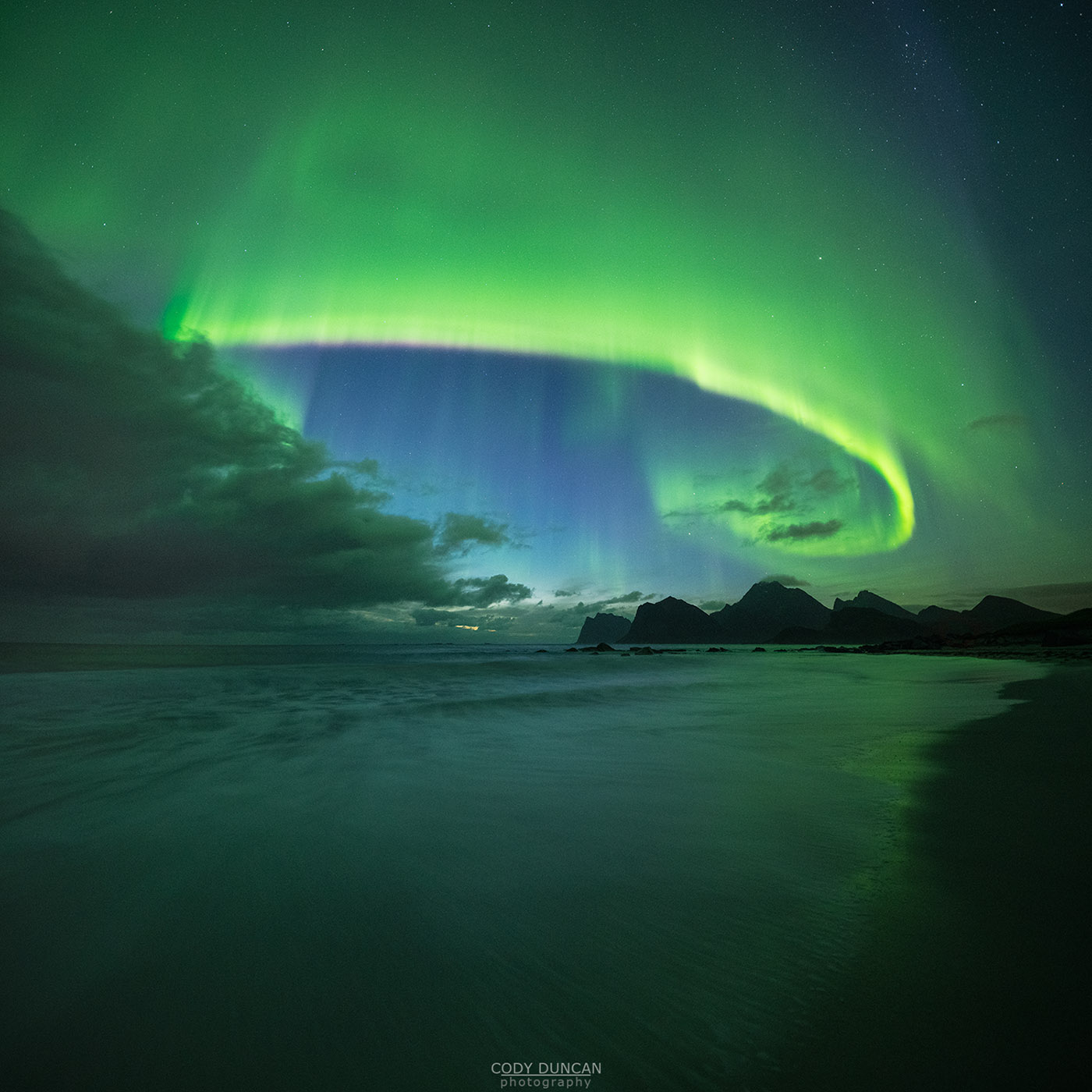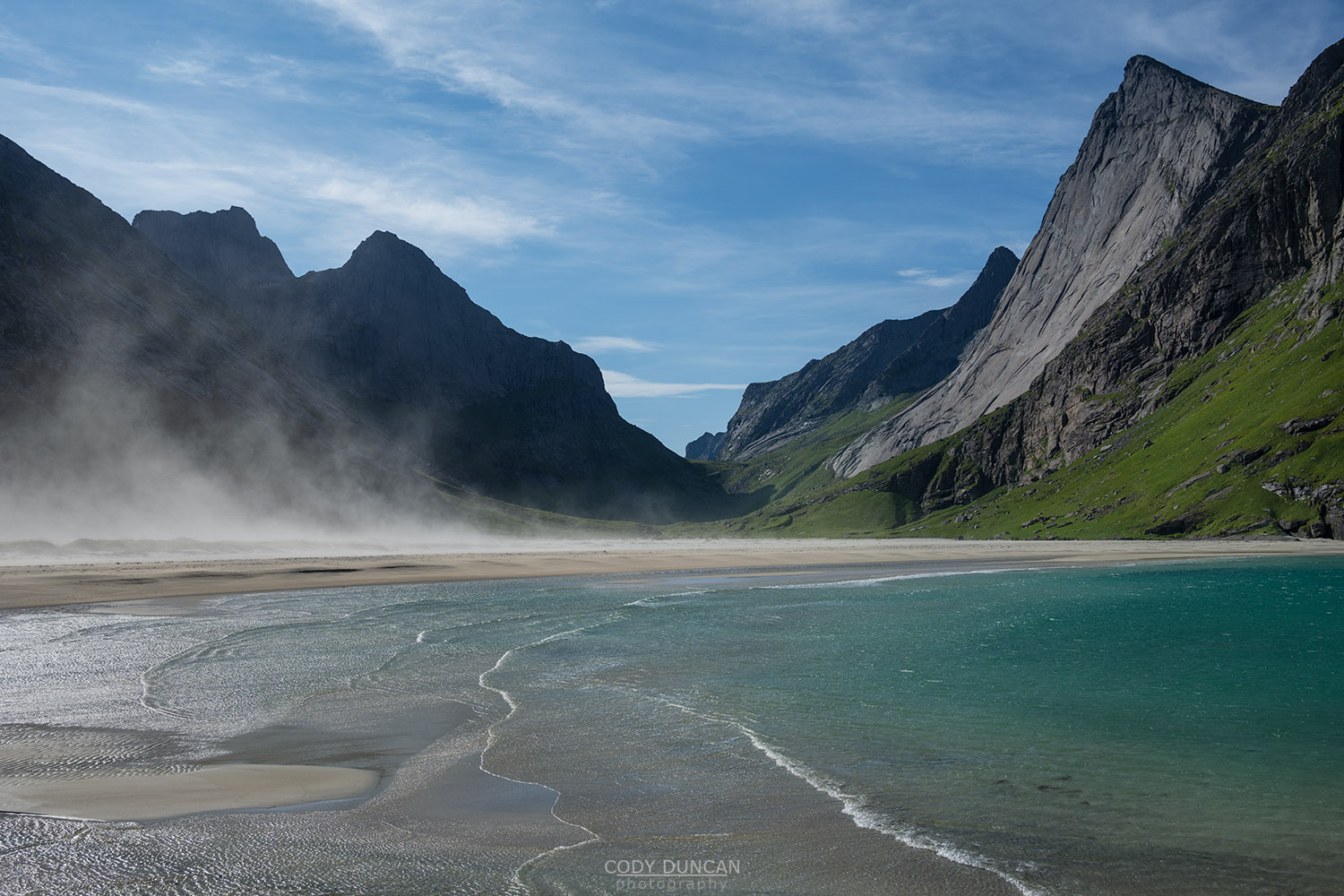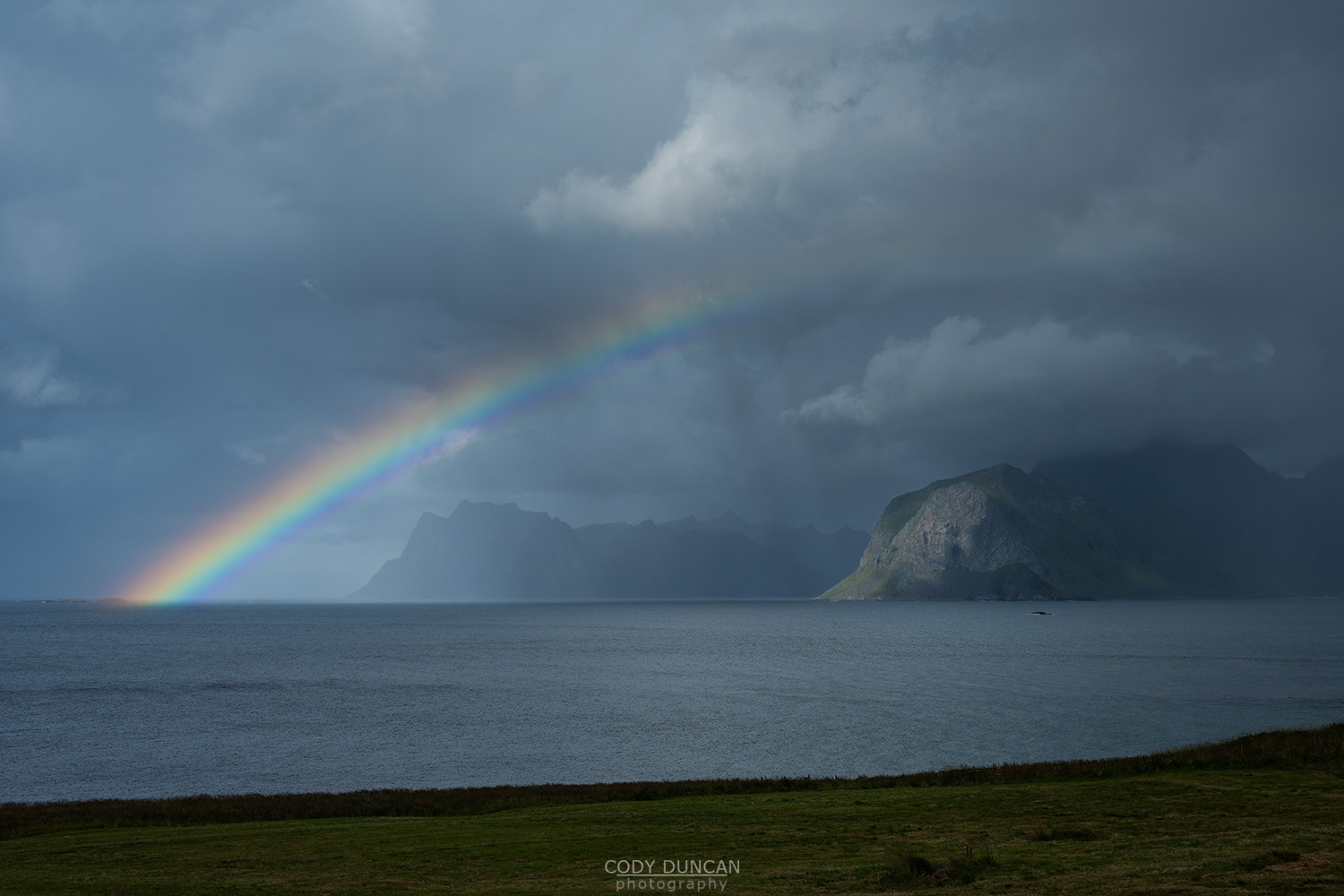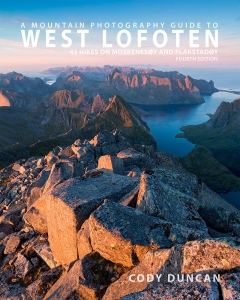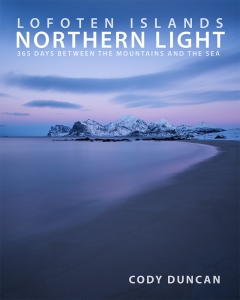Friday Photo #547 – The Flow Of Fog
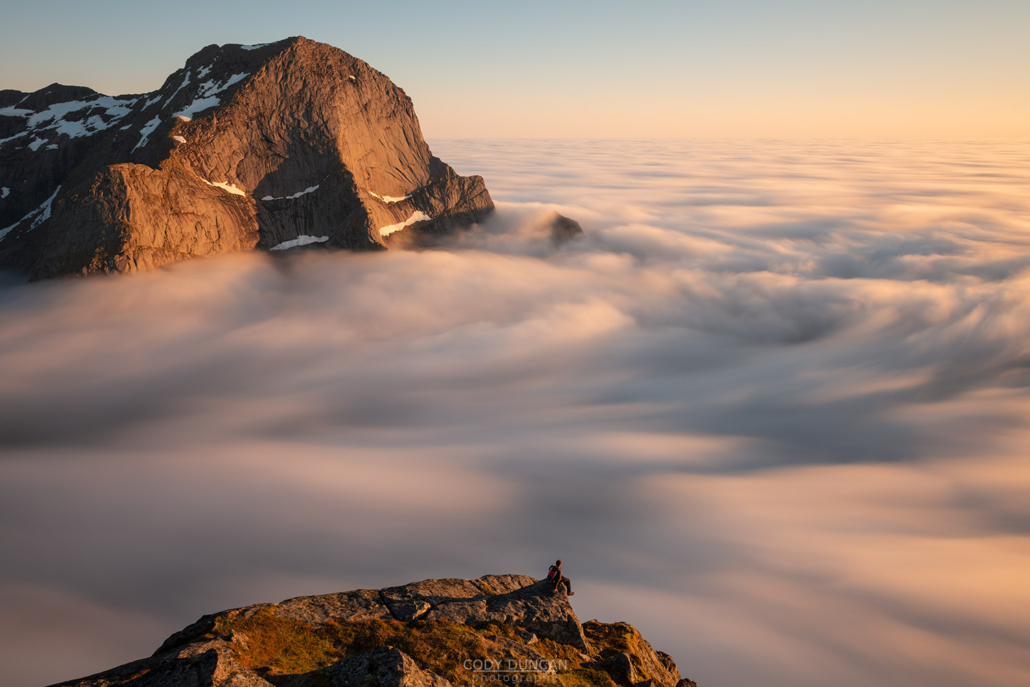
Photo: Sea fog over Bunes beach swirls around mountain peaks from Helvetestind, Lofotodden national park, Moskenesøy, Lofoten Islands, Norway. June 13, 2017. 22:59
A northern wind on a hot summer day is always something that I’m weary of in weather forecasts, as this is the bringer of the fog monster to the yttersia – outer coast of Lofoten. Several times each summer I have to alter my planned hiking or camping locations due to the fog as it is better to stay on the sunny southern side of the islands than sitting in the cold, dark for cloaking the northern side.
However, if you can get above the fog, which usually rises no higher than 400-500m, then you will be standing above a sea of clouds and with mountain peaks rising like islands in the sky. On this particular night during a photo workshop several years ago we had simply planned for an evening at Bunes beach and to return sometime after midnight. However, before even leaving Reine, I could see fog flowing over the pass and down into Vindstad, so i knew a change of plans would be likely.
Though the fog was still initially somewhat light and the sun appeared from time to time, it was evident that it would mostly be a waste of time hanging around Bunes beach all evening, so I decided for plan b, and took the group up Helvetestind – hiking guide here, which I was confident would remain above the fog.
In my opinion, the view from Helvetestind over Bunes beach is one of the best to be found in Lofoten. Arriving at the summit this evening, there was no beach to be seen, only an ocean of fog. I’ve already posted a couple other images from this evening serval years ago: Friday Photo #233, and Friday Photo #245, but never this version of the scene.
The below image is just a normal shutter speed photo. I’n my opinion it’s just a bit ‘ehhh…’ and I would have rather had a view of the beach below in this case. In the above image though, using a 10 stop neutral density filter for a 60 second exposure, you can see how the movement of the fog completely transforms the image into something much more dynamic and interesting. Here, With the peaks rising over the flowing fog, I’m okay without being able to see the beach below. Which also reminds me that I haven’t been to Helvetestind in a couple years, so probably time to head out there soon!
Head over to my Instagram account for (almost) daily postings of the local conditions here on Lofoten: @distant.north
Camera Info:
Nikon D800
Nikon 24-70 f/2.8
24mm
ISO 50
f 13
60 Seconds
WB Daylight
10 Stop ND filter
